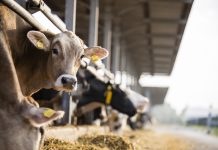The U.S Department of Agriculture (USDA) has announced a series of initiatives aimed at promoting competition within the agriculture sector
The efforts to promote fairer market conditions and reduce food prices for American families are outlined by Agriculture Secretary Tom Vilsack, show the Biden-Harris Administration’s commitment to enhancing transparency and fairness across key segments of the food supply chain.
Improving seed competition
One of the main focuses of USDA’s strategy involves improving access to seed germplasm, the essential materials used by plant breeders to develop robust and diverse crop varieties.
This aims to boost competition among seed suppliers and empower farmers with more choices. By clarifying patent-related disclosures and promoting the sharing of federally-funded germplasm for research purposes, USDA looks to stimulate innovation while ensuring fair access.
Investigating meat retail market practices
USDA’s interim report on the meat retail industry reveals some concerning trends of market concentration, particularly among major meatpackers and distributors. The report showed concerns from farmers and smaller processors regarding opaque pricing practices and hidden fees, which can adversely impact competition and consumer prices. In response, USDA plans to further investigate these issues and initiate rulemaking processes to foster fairer market conditions for livestock producers and processors.
Recognising the critical role of fair pricing in sustaining rural economies, USDA is also taking steps to enhance price discovery in cattle markets. The Advanced Notice of Proposed Rulemaking under the Packers and Stockyards Act aims to address concerns over the use of alternative marketing arrangements (AMAs) in setting cattle prices. By getting public input on potential reforms, USDA aims to mitigate market distortions and ensure that prices reflect true supply and demand dynamics, benefiting both producers and consumers.
Consumers and farmers
These initiatives are expected to benifit consumers and farmers. By encouraging better competition in seed markets, USDA anticipates increased innovation and a broader collection of crop varieties, potentially driving down costs for farmers and consumers. Improvements in meat market transparency and cattle pricing could lead to fairer pricing and more equitable market conditions, supporting small and midsise farmers and processors.
As USDA moves forward with these initiatives, stakeholders are encouraged to participate in the public comment processes and contribute to shaping the future of agricultural competition in the United States. These efforts align with President Biden’s broader economic agenda to promote fairness and reduce barriers for small businesses and family farms, ultimately aiming to lower grocery costs and enhance economic opportunities across rural America.











